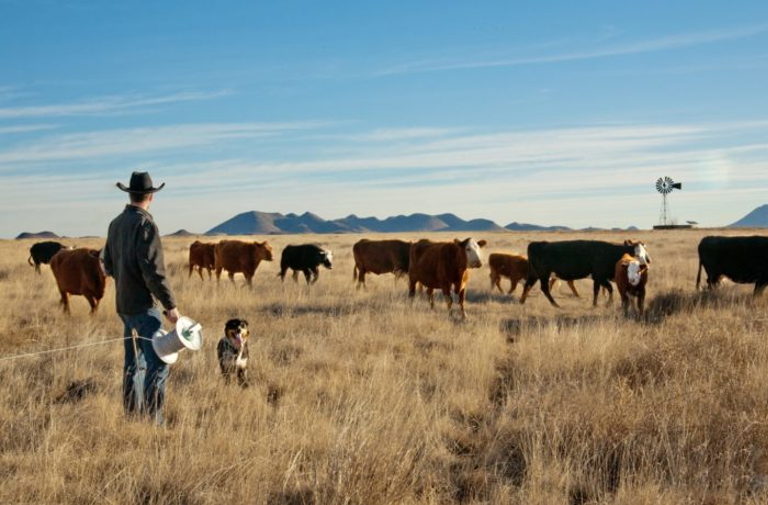
Mark Johnson, Oklahoma State University Extension Beef Cattle Breeding Specialist, offers herd health advice as part of the weekly series known as the “Cow Calf Corner” published electronically by Dr. Peel, Mark Johnson, and Paul Beck. Today, Johnson talks about part two of a historical review of the beef cattle industry.
During the first half of the 20th century a selection trend developed and then intensified toward earlier maturing, smaller framed cattle. In the 1950s, surplus feed grains and consumer demand for grain finished beef led to the advent of the commercial feedlot. “Snorter Dwarfism” was reported in 1951, which is believed to have been the result of intense selection for extremely small frame cattle.
By the 1960s the U.S. was primarily populated by Angus, Hereford and Shorthorn cattle of the small framed, “comprest” variety. Crossbreeding was considered sacrilegious by many cattle breeders. The modern feedlot industry was expanding in response to cheap feed and consumer demand for grain finished beef. The industry was searching for cattle that could be pushed to heavier finished weights without becoming over fat. The carcass yield grading system was adopted in 1965. Charolais cattle had been imported from Mexico in 1936, but the feedlot performance of the Charolais crossbred steer in the 1960s created an awareness of the lean growth potential offered by the Continental European breeds. Simmental cattle were reintroduced, the Limousin breed was imported and a “breeds revolutions” started that would see dozens of breeds imported to the U.S. over the next 15 years. By the end of the 1960s cattle breeders, in all breeds, were selecting for larger framed, leaner, later maturing type. In the 1970s crossbreeding became widespread practice in the commercial cow-calf industry. Intense selection for larger type would continue into the late 1980s.
Genetic Improvement
The establishment of the Beef Improvement Federation in 1968 led to standardized performance measures, defined contemporary groups, more extensive record keeping and eventually, the prediction of genetic values. By the 1970s all breed associations started to establish data bases and artificial insemination became more widely utilized in the purebred sector. The first National Sire Summary was published by the American Simmental Association. By the end of the 1980s all major beef breeds were publishing annual sire summaries. Genetic prediction consisted primarily of four basic EPDs: Birth Weight, Weaning Weight, Yearling Weight and Maternal Milk.
By the end of the 20th century the “breeds revolution” had long been over. Many breeds had lost their identity and/or popularity. The “on-foot” type of all beef breeds was becoming more homogenous. The type of cattle selected for were moderate framed with excellent growth as a result of the selection trend for more muscle and body volume. Successful breeds and purebred seedstock operations capturing the most market share were not only selling cattle but also information about the cattle. Cattle with more documented and better information had more value. The value of purebred cattle was driven by the three criteria: Performance, Pedigree and Visual appraisal of “on foot” type.Over the past 20 years, we have went from publishing hard copies of Sire Summaries once or twice annually to the current capability of generating updated EPDs on a weekly basis. Genetic prediction now consist of approximately 20 trait specific EPDs as well as several selection indices (or $Values).
Reviewing genetic trend information of virtually each breed indicates breeders have been highly successful in putting more sharp angles into the sigmoidal growth curve. Specifically, keeping birth weights down while improving weaning and yearling weights. As well, high heritability carcass traits (Marbling and Ribeye size) have shown a dramatic increase. Improved beef carcass quality attributes, specifically marbling, have been focused on to promote satisfaction in the beef eating experience. The quality of beef has significantly improved over the past two decades.
What is there to learn from this historical review? The beef industry has changed, is changing and will continue to change. Identifying emerging trends, understanding consumer demand, using technology to improve efficiency and keeping your cattle genetically relevant all will be important to the future financial success of your operation.














